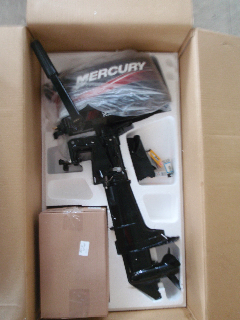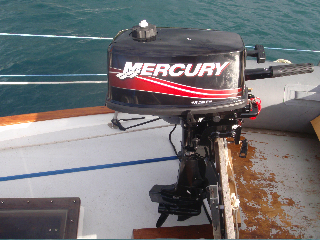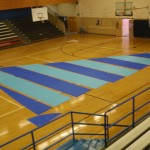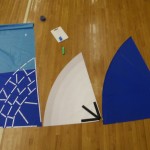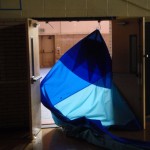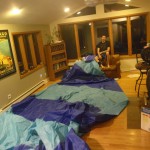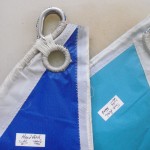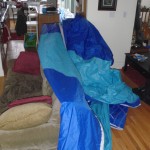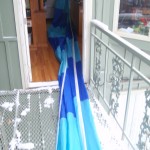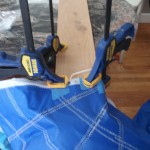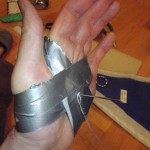“How long are you going to be in Bundaberg?” asked Ducan over some beers at a pub in Bundaberg. Justin replied, “temporarily, indefinitely.”
The three days prior to arriving in Bundaberg, a city renowned for brewing an exceptional rum, we had been running our engine for five or six hours a day. There was just no wind or we were in a place so narrow that I didn’t want to be sailing. The Great Sandy Straights just south of Bundy, while serenely beautiful, were tough to navigate, so the engine was on the entire time. More posts later about fun we had there. At least we knew the engine fabulously.
Until the day after we got to Bundaberg and tried to move away from the obscene $50 a night marina we were staying at. Then our engine decided not to start. Two hours of investigation revealed nothing and at that point Kate, our supremely gracious and generous friend here in Bundy, arrived to take us back to her place for hot showers and beds. Another $50 to the Bundaberg port marina. They would get at least another $150 dollars when all is said and done.
The next morning Justin and I arose early and headed back to boat. Since the engine was cranking but wouldn’t fire, I suspected air in the fuel lines, something Matt confirmed in some e-mails I traded with him.
Getting air out of the lines is supposed to be relatively straight forward. Follow a few steps and they should be cleared of air and the engine should start. Air may however, leak back in once the engine is turned off. Finding and permanently fixing an air leak is a confounding, vexing, frustrating and all-together potentially miserable experience. But I digress…. simply getting air out of the lines is supposed to be a relatively straight forward process.
First: open the bleed screw on the primary filter currently being used (we have two of them) and use the pump on the primary filter to pump fuel though the filter. Air bubbles should come out of the bleed screw and when they stop then there is no air from the tank to the primary filter.
First problem: fuel began leaking out of the other primary filter bleed screw.
This was not surprising or unexpected as the bleed screw on said filter is a plastic piece of shit bolt that is basically stripped and deserves to melted down and turned into a children’s toy where it can cause joy instead of the frustration and ire it caused me. I had temporarily fixed this six months ago by wrapping it with plumbers tape and I again painstakingly cut some plumbers tape in half and wrapped it around about a dozen times all the while mumbling under my breath curses at it. Two days later I would buy a nice new metal bolt and declare victory on something Matt and I knew we should have done two years ago.
Simultaneous first problem: fuel began leaking from above my head.
This was surprising and unexpected. Instead of mumbling curses under my breath, this elicited an audible, “where the fuck is that coming from?” I was apparently too eager on the pumping at the primary fuel filter and was forcing fuel out via our vacuum gauge. There is a line running from the fuel system to the back of this gauge so that it can measure fuel pressure. There was no hose clamp on the line for some reason, just a tube pushed onto a nipple in the back of the gauge. I zip-tied it for now, and should hose clamp it later.
Second step: open nut on fuel line exit at secondary fuel filter and using lift pump, pump diesel out until any air bubbles go away.
Second problem: fuel began streaming out of the secondary fuel filter, which I had just changed. I must now mash and squeeze and contort my body over the engine so that I can better see the secondary fuel filter and put the o-ring and the filter on correctly. My head is now inches away from where two years ago I had jump started the engine via my body when I connected the alternator to the starter motor or solenoid, (I’m still not entirely sure what happened back then). Having the engine start unexpectedly, with me lying on top of it, because current had gone through either me or a tool I was holding, was not an experience I wanted to repeat. Thirty minutes later, the secondary fuel filter is finally on appropriately with a mild stream of obscenities.
Third step: open fuel line leading to fuel injection pump and using the lift pump, pump diesel out until any air bubbles go away.
Third problem: No fuel will come out. I can hear fuel running through the system and returning to the fuel tank, but no fuel comes out here. I give up and move on, with a pointedly loud set of damnations for the engine.
Fourth step: open bleed screw on fuel injection pump and using the lift pump, pump diesel out until any air bubbles go away.
Fourth problem: The bleed screw is located in another screw, lets call it the ‘stupid screw’ which goes into the pump. When I try to loosen the bleed screw, it seems to be seized to the stupid screw, and instead the stupid screw loosens. The bleed screw is specifically made so that when loosened, only a small amount of fuel comes out. The stupid screw is not. Lots of diesel now comes out as I fumble around trying to find the wrench that will appropriate tighten the stupid screw and not just tighten the bleed screw further into the stupid screw. I get it to work right with additional wrenches as I ponder what cancer I am bringing upon myself with diesel dousing my hands. I am also cognizant that neighboring boats might have head the stream of invectives I direct at the engine.
Fifth step: Crack open each injector nut, there are four, and crank the engine with the throttle open. If bubbles appear, the engine has not been appropriately bled and the process must be repeated.
Fifth, six, and seventh problems: The fifth and sixth problems are that two injector nuts leak air, so I have to repeat everything. The seventh problem will vex me for three more days. Instead of the injector nut opening, the injector adapter (some stupid adapter piece between the injector nut and the injector) comes loose and will not retighten. The injector nut will also not break free. Over the next two days this illicit roars of hell-fire, and I begin to scare Justin with a series of imitations of an 8 year old’s temper tantrums. I should be mildly embarrassed but the engine has gotten the better of me.
So we are now in Bundy, the rum city of Australia temporarily, but indefinitely. At least I can drown my sorrows in rum.
post script: The problem was finally fixed upon pulling off the fuel line, purchasing a new injector nut, reassembling, and bleeding the engine multiple times. The engine has now been running perfectly for the last month. You can read a different take on this and more about the resolution on our maintenance blog here.
